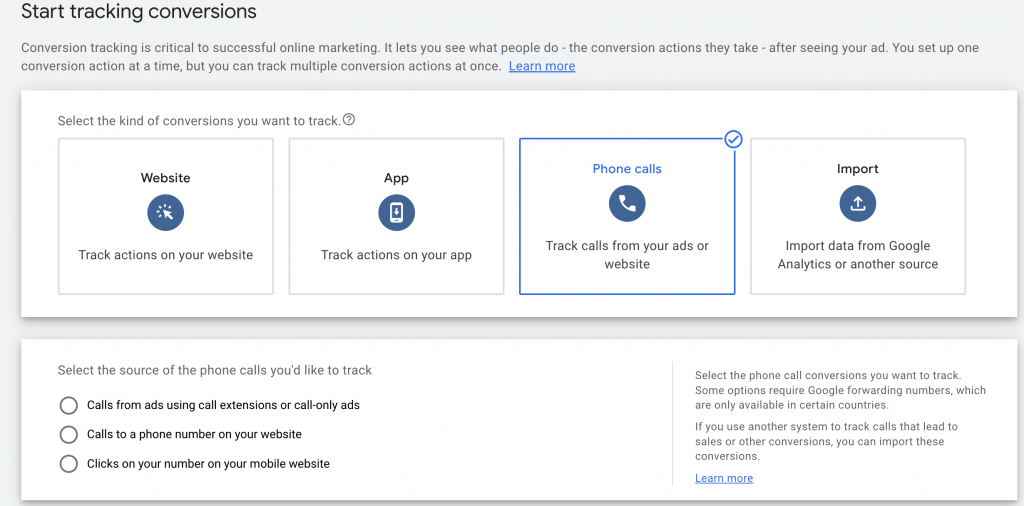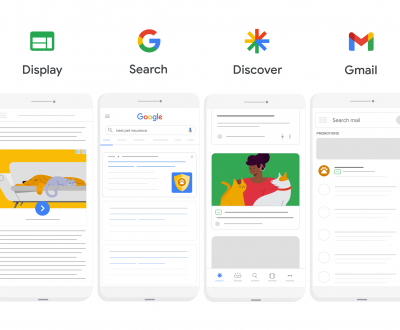Businesses are equipped with a variety of brand-building tools that help them establish their image online. PPC or pay-per-click is one of them. The success of PPC can be determined by the data that talks about the conversion statistics. These statistics can be found from various sources, the one we will discuss in this post is the call tracking system. The call tracking throws light on how the campaign has contributed to the brands’ establishment as an online player.

Basics of call tracking
All businesses provide one or multiple phone numbers so that the customers can reach them. These incoming calls can be tracked using a unique phone number whose main function is to track the call and record its details. It is called the unique tracking number.
Due to this number, when a person calls the business, the details of the calls are recorded. Usually, the tracking number records data such as the caller’s phone number, call duration and its date and time, waiting time experienced, and whether the call was made for the first time or was a repeat call. It helps segment the market and understand whether the marketing campaign has reached the right audience or not.
The statistics from call tracking provide information that can be used to determine the deliverability of the marketing campaigns. The businesses can also map customer behavior and tap the information to design the marketing funnel and have more conversions.

Call tracking can have or may not have the call recording feature. Based on the industry where they intend to use call tracking, the subscribers may opt for the recording of calls received. During the interaction, they provide the information to the caller that the call is being recorded. Mostly, they do this for internal training and sometimes, to get the data to devise marketing strategies.
How to track calls from ads?
- Sign in to your Google Ads account.
- Click the tools icon
in the upper right corner of your account.
- Under “Measurement,” click Conversions.
- Click the plus button
.
- Click Phone calls.
- Select Calls from ads using call extensions or call-only ads, then click Continue.
- Next to “Category,” select a description for your conversion action from the drop-down. The category allows you to segment your conversions in reports, so you can see similar conversions together.
- Next to “Value,” select Each phone call is worth and enter a value for each call, or select Don’t assign a value.
- Next to “Count,” select whether to count every or one conversion per ad click. “Every” is best for sales; “one” is best for leads.
- Click Call length. Enter the minimum length, in seconds, that a phone call needs to last in order to be counted as a conversion.
- Click Conversion window. Select a conversion window (how long after an ad click you want to track conversions) for this conversion action. The window can be 1 to 60 days.
- (Advanced) Click Include in “Conversions.” Opting into this setting—selected by default—will include data for this conversion action in your “Conversions” reporting column. If you uncheck this setting, data will still be included in the “All conversions” column.
- Click Attribution model. This setting lets you choose how to assign credit for each conversion: to the last click a customer made before a conversion, the first click, or a combination of clicks. Learn more about each option and how this setting works in About attribution models.
- Click Create and continue.
Role of static and dynamic numbers
Businesses may use types of numbers – static and dynamic numbers. The static number is one which is just a single number. It is assigned to a single type of channel and is attributed to a specific campaign. There is additional call cost involved apart from the per minute tariff that a call usually attracts.
On the other hand, dynamic numbers may change with the change in the source of caller. The user is paying for a number pool instead of a single number. To make the best use of dynamic numbers, lots of numbers should be added to the pool. This will not create attribution issues arising due to very few numbers assigned.
Working of call tracking
The call tracking is mainly used for attributing the phone call conversion to the marketing source that initiated it. Many times, the callers are asked how they came to know about the service. The call tracking eliminates the need to ask this question and provides a good alternative which is automated and to the point. Thus, the marketers can understand the reach of the campaign and decide whether they have succeeded in their endeavor of bringing traffic to the business or not.
Here is how the call tracking works?
The mechanisms in which call tracking works differ from source to source. There are a few ways using which call tracking facility is used.
First one is offline marketing collaterals. A person can reach the business as a response to the information he receives through flyers, pamphlets, magazine ads or landing pages, etc. The businesses can buy the tracking number corresponding to these marketing collaterals and know how these instruments contributed to maximizing the benefit of the attempt made to reach the customer.
Next method worth discussing is call tracking through software implanted on the business’s contact number. This facility records the call and collects information about the purpose and duration of the call among other statistics. On completing the collection process, the number is forwarded to the relevant destination number or extension number.
This method dispenses the need to have a unique tracking number and allows businesses to have relevant information in a limited budget. The outcomes differ when the business uses toll-free numbers for communication.
Businesses may not like toll-free numbers – a challenge
Toll-free numbers are not much favored by the businesses. These are the entities that want to create a customized experience. They feel that the connection with the buyers is lost as toll-free number does not readily offer a personalized outreach. Also, they feel that branding takes a toll due to automated voice messages and IVR systems that are typical of the toll-free numbers.
Local numbers may need additional in-house staff to manage the caller traffic. So, the businesses must test both the ways to arrive upon an acceptable method that works the best for them.
How to set the call tracking
To set the call tracking, a business needs to ponder over certain issues first. The businesses have to understand the budget limitation and assign the available budget to the call sources of their choice. It does require a lot of testing at the start.
Once the budget limitations and relevant sources are established, a small code is added to the Google Tag Manager. Alternatively, a functional element designed for the purpose may also be considered for insertion of the code snippet.
The snippet does the job of tracking a single number; but, in case of multiple numbers, the businesses have two choices. First, they can track the numbers which are directly connecting to the business number. Second, the number will change according to the source from which the call is enabled. It is important for reviewing the data and to plan the marketing activities.
Once these decisions are made, the UTM parameter interacts with the site’s designated code snippet. As a result, the number changes as per the number’s source and delivers the complete report to the business.
If you are planning to outsource the tracking process, you need to ascertain the main numbers and sources you plan to track.
Sources tracked by the call tracking specialists are:
- PPC: People reach the business through Google Ads
- Organic: People perform keyword search and arrive upon the business number
- Direct traffic: These users interact with the site directly by typing URL and dialing the contact numbers provided
- Call extensions: The phone numbers attached to Google Search Ad or Microsoft Ad are called by the visitor
- Social networks: Phone numbers provided in the social media channel’s ad are used
- Google Business Profile: Number provided in Google Business Profile is the chosen touch point
A business may club together the campaigns to save on the cost. But in that case, the tracking may not be so accurate and the businesses may not have clear cut information of the premise from where most leads are generated.
How to select the call tracking vendor
Call tracking systems may be use-based or may have a set of pre-fed characteristics. Some of the important considerations to make while choosing the call tracking vendor are:
- Minute-wise price of the call tracking vendor
- Costs for specific numbers, if any
- Availability of recording and transcripts – are these free or chargeable?
- Whether international coverage is included and at what cost
- Is full coverage of all touch points possible within defined cost?
- Availability of tech support for onboarding and other requirements.
Top features of the call tracking service providers
When you choose a professional call tracking service provider, you get the following facilities as a part of service:
- Transcriptions
- Lead generation forms
- CRM
- Local and toll-free numbers with portability feature
- Call analytics, etc.
CalltrackingMetrics, CallRail, Marchex are the top leaders in the call tracking tools sector. These tools have eased the process of setting up call tracking for their clients. Their focused customer service and complete coverage of all steps involved in call tracking makes them the perfect options for understanding customer relationships generated through a phone call to the business.
Role of call tracking in business’s online success
Every business needs to understand which attempts are yielding them good returns. Just like the viability of media buying, billboard advertising and other promotional tools is set, call tracking is important to understand the outcome of online advertising efforts.
So, the call tracking highlights the ROI coming from various ad channels. It is essential for designing the fruititious marketing strategy.
The call tracking helps find the role SEO content is playing in the brand’s visibility and ultimately, in conversions. One can find which campaigns are proving to be most yielding among the lot.
The ability to track calls enables businesses to consolidate several services like SMS marketing, Lead generation forms and CRMs, etc. This consolidation enables better streamlining of business and ensures cost-saving; it improves the bottom line of the businesses.
Summing up,
A business thrives on the customer interaction. To achieve the best customer experience, the business needs data. Call tracking service offers this data and also helps understand the engagement levels of customers with the business. This information at Media Challengers is useful for designing marketing campaigns and to create a delightful customer experience.
Media Challengers, led by Birendra Kumar, is the foremost SEO and PPC services company, specializing in implementing a comprehensive range of online marketing techniques to enhance business profitability. As a Google certified agency partner, we bring expertise in SEO (Search Engine Optimization) and PPC (Pay-Per-Click) strategies to drive successful digital campaigns.
Do you want an instant result and traffic?
You are at the right place, we are committed for instant result (Call, Query Form, Traffic, view, etc..) generation. If you have any questions please let me know.
Our last month campaign performance

Recent Posts
- How to set up Performance Max campaign? April 7, 2024
- The Importance of Keyword Research in Google Ads Campaigns February 25, 2024
- Maximizing ROI with Google Ads Budget Management 2024 December 21, 2023











